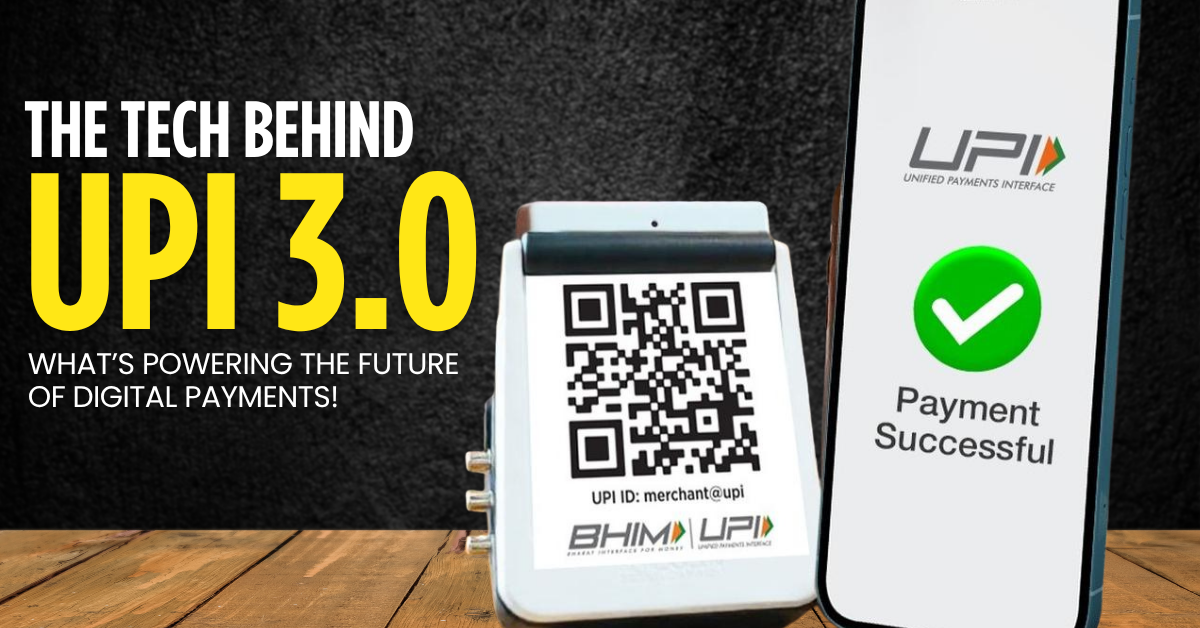India’s Unified Payments Interface (UPI) rewrote the rules of digital transactions. Now, with UPI 3.0 in full throttle, the game is getting smarter, faster, and more personalized. Whether you’re a fintech pro or a curious mobile user, this post breaks it all down — from new tech enhancements to what they mean for everyday life.
🚀 What Is UPI 3.0 and Why It Matters
If UPI 1.0 was about quick scan-and-pay, UPI 2.0 added savings account linking, overdrafts, and one-time mandates. Now, UPI 3.0 is pushing the envelope further with features like sound-based payments, bill reminders, and multi-bank auto-sweep, making digital payments more intuitive than ever.
These upgrades aren’t just features — they’re infrastructure upgrades built on smarter tech, better integration, and higher user empowerment.
🔧 Core Technology Innovations in UPI 3.0
Let’s dive into the tech stack making it all possible:
1. Sound-Based Payments via UPI Mantras
With UPI Mantras, phones can send or receive payment codes using encoded sound waves — even if there’s no internet. This Edge-of-India-friendly solution works in remote areas and costly bandwidth regions. When you tap “Pay by Sound,” your phone emits a short audio tone a POS device or another phone picks up, securely processes via UPI rails, and voilà — payment completed.
Technologies involved:
Real-time audio encoding/decoding
Low-latency encryption
Background sound sensing (through headphone jack or mic)
Silent or modulation-based authentication
2. Multi‑Bank Auto Sweep Mechanism
Many users have multiple bank accounts, but managing balances can be a pain. UPI 3.0 introduced an auto-sweep feature: if one account is low, it automatically pulls needed funds from a linked secondary account. The underlying tech orchestrates:
Real-time fund checks via NEFT or IMPS fallback
Secure multi-bank routing
Seamless fund movement under a single UPI handle
3. Bill Reminders & Intent-Based Requests
Need to pay rent, subscriptions, or utilities? UPI 3.0 lets you set payment intents in your app. The reminder triggers at set dates, pre-filling the payee, amount, and payment flow. Think of it as Google Calendar, plus payment engine.
This is powered by:
Scheduled intent queues in UPI servers
Pre-auth token-based consent mechanisms
Deep link integrations via UPI wrappers
4. Enhanced Security with Device Binding and Biometrics
UPI 3.0 strengthens trust by binding payments to your unique device fingerprint, along with optional biometric authentication like fingerprint or facial unlock. This prevents unauthorized clones and adds another layer of protection.
Under the hood:
Device ID hashing
OS-level biometric APIs
UPI token vaulting for one-time-use tokens
Biometric matching via secure enclaves
5. Faster QR & VPA‑less Transfers
You no longer need to enter Virtual Payment Address (VPA). UPI 3.0 accelerates QR scanning with deep-link payment. The tech:
Scans enhanced QR codes with SSL‑like certificate verification
Performs QR code data validation
Routes using on‑device pre‑caching for instant lookup
Supports dynamic QR linking across billers and merchants
🧠 How UPI 3.0 Enhances Everyday Life
Forget jargon — here’s how these features play out in real life:
Rural merchant in Alipurduar: no internet, no problem. A customer pays via sound-based UPI Mantra. No data, no hassle.
Millennial in Delhi: sets a monthly Netflix intent. The app reminds her weekly, auto-fills payee and amount. Done in a tap.
Working couple with two bank accounts: payroll lands in one; rent comes from the other. Auto‑sweep handles fund flow seamlessly.
Shopper at a pop‑up kiosk: just scan the dynamic QR, and payment goes instantly — no typing VPA, no wait.
Security‑concerned user: the app rejects login on a cloned device, thanks to biometric binding plus device fingerprint checks.
📊 The Innovation Landscape: UPI 3.0 Compared to Before
| Feature | Pre‑UPI 3.0 | UPI 3.0 |
|---|---|---|
| Payment Methods | QR, VPA, bank link | Sound‑based, auto sweep |
| Handling Insufficient Funds | Payment failure | Auto transfer from secondary |
| Scheduled Payments & Reminders | Manual | Intent‑based reminders |
| Device Security | PIN on device | Device fingerprint + biometrics |
| QR Performance | Static codes, slower routing | SSL‑verified dynamic QR, instant routing |
📈 Why UPI 3.0 Matters for India’s Digital Future
Digital Inclusion: Features like sound-based UPI make digital payments viable in low-connectivity geographies.
Financial Behavior Shift: Automated reminders help build a culture of timely bill payments and disciplined finances.
Account Consolidation: Auto-sweep bridges multiple banks, making money movement seamless.
Better Security: Biometric binding deters fraud and misuse, critical in a country where UPI adoption is sky-high.
Smarter UX: Convenience leads to adoption—low friction means more comfort using UPI daily.
🤔 Challenges and Growth Areas
UPI 3.0 isn’t perfect yet—some areas still need polish:
Older phones lack microphones for sound-based payments.
Regional banking systems may not support auto-sweep yet.
Users not familiar with automation may misconfigure reminder intents.
Ongoing biometric and device data privacy concerns remain.
But with continuous upgrades, community education, and better onboarding flows, these challenges are being tackled—fast.
🔭 What’s Next Beyond UPI 3.0?
The future is even brighter. Here’s what might come next:
Voice assistants powered by UPI: “Pay ₹500 to landlord” in local language will trigger the app
AI‑driven spending analytics built into the UPI dashboard
Smart micro‑loans triggered automatically if a payment fails due to low balance
Offline network clusters for remote areas with mesh‑based payment propagation
QR‑less Bluetooth‑enabled peer‑to‑peer payments for small gatherings or neighborhood markets
These are not sci‑fi—they’re the natural next steps built on the groundwork of UPI 3.0.
🧩 Final Words: UPI 3.0 — Technology with Transaction
UPI 3.0 isn’t just another update. It’s a leap—a thoughtful layer that blends connectivity-free transactions, intelligent fund routing, and personalized reminder interactions, all secured by modern device-based identity.
It’s easy to overlook tech details, but these innovations are quietly shaping how India transacts, saves, and interacts. UPI 3.0 is more than digital payment tech—it’s financial infrastructure that learns, adapts, and evolves with every Indian user.
In a country where every rupee matters and convenience can be a barrier, UPI 3.0 is making digital finance not just smart, but inclusive, intuitive, and uniquely Indian.
Read
Understanding UPI 3.0: Features, Benefits, and the Future of Cashless Payments







